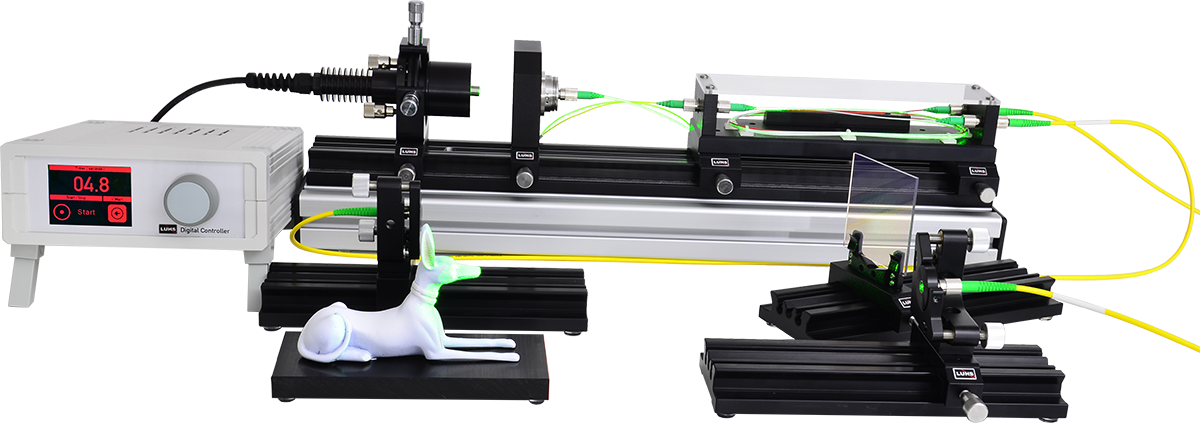All fiber coupled
Fiber Spatial Filter
Fiber Beam Splitter
Single Mode Laser
Transmission Hologram
Reflection Hologram
Photographic Development
PE-0800 Holography
Topics:

PE-0800 Holography
Fiber coupled Holography Set-up
| Item | Code | Qty. | Description |
|---|---|---|---|
| 1 | CA-0030 | 1 | Set of development equipment |
| 2 | CA-0034 | 1 | Set of developer chemicals |
| 3 | CA-0036 | 1 | Sample object for holography |
| 4 | CA-0038 | 30 | Photographic plate VRP-M, 532 nm, 63 x 63 mm |
| 5 | DC-0090 | 1 | Laser controller and exposition timer |
| 6 | LQ-0040 | 1 | Green (532 nm) stabilized Laser, 40 mW |
| 7 | MM-0060 | 1 | Filter plate holder on MG20 |
| 8 | MM-0420 | 1 | Four axes kinematic mount on carrier MG20 |
| 9 | MM-0440 | 2 | Kinematic mount ø25.4 mm on MG20, left |
| 10 | MP-0110 | 3 | Optical Bench MG-65, 100 mm |
| 11 | MP-0150 | 1 | Optical Bench MG-65, 500 mm |
| 12 | OC-0436 | 2 | FC Fiber jack in 1" disk |
| 13 | OC-0490 | 1 | Sample transmission hologram (chess pieces) |
| 14 | OC-2020 | 2 | ST/ST SM Fiber patch cable, length 1 m |
| 15 | OC-2360 | 1 | Fiber SM beam splitter unit |
| 16 | UM-PE08 | 1 | Manual Holography |
| Required Option (order separately) | |||
| 17 | LQ-0214 | 1 | Dark Red LED in ø 25 housing |
| Media Type | Title | File Size [MBytes] | Action |
|---|---|---|---|
| PE-0800 Holography Version 2022 |
4.47 MB | Download | |
| Catalogue Page | |||
| JPEG, PNG, SVG | Pictures | ||
| MP4 | Video |